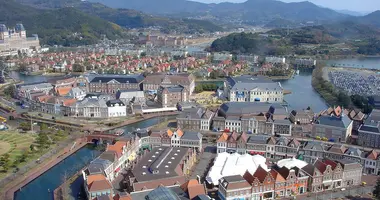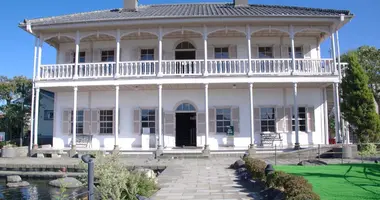Glover Garden Nagasaki: A journey through Japan's early modernization
- Published on : 24/06/2024
- by : Japan Experience
- Youtube
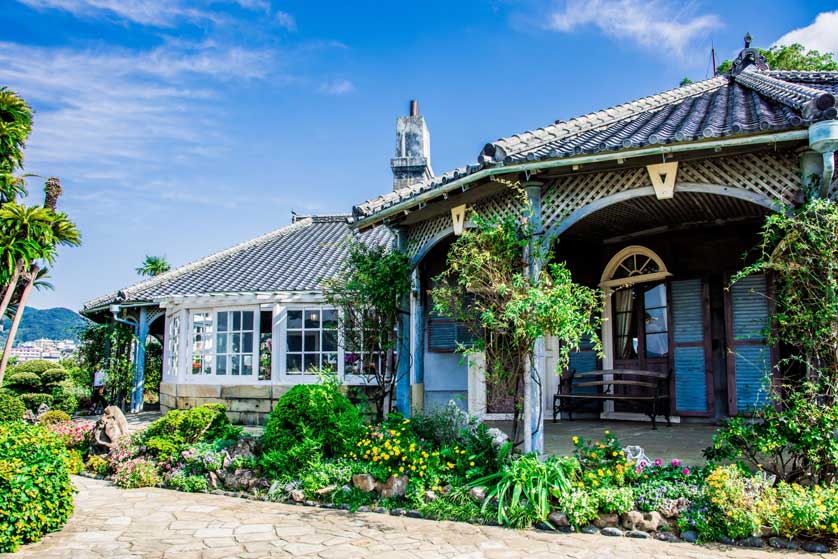
Glover's house at Glover Garden
Nestled on the hillside of Minami-Yamate in Nagasaki, Glover Garden stands as a testament to Japan's fascinating journey towards modernization. This open-air museum, home to the oldest surviving Western-style wooden building in Japan, offers visitors a unique glimpse into the lives of the foreign residents who played pivotal roles in shaping the country's industrial landscape. As you wander through the meticulously preserved grounds, you'll find yourself transported to the late 19th century, a time of rapid change and cultural exchange. From the iconic Glover Residence to the carefully curated exhibits showcasing the area's rich history, every corner of this garden tells a story of innovation, entrepreneurship, and cross-cultural collaboration. Whether you're a history enthusiast, an architecture lover, or simply curious about Japan's transformative Meiji period, Glover Garden promises an enriching experience that bridges the past and present.
Historical significance of Glover Garden
Glover Garden holds immense historical significance as a symbol of Japan's rapid modernization during the Meiji period. Established in 1863, the garden is named after Thomas Blake Glover, a Scottish merchant who played a crucial role in Japan's industrial development. The site represents the era when Nagasaki served as a gateway for Western influence and technology to enter Japan after centuries of isolation.
The garden's location on the Minamiyamate hillside is no coincidence. This area was part of the foreign settlement where Western merchants and diplomats resided after Japan's reopening to international trade in 1859. As you explore the grounds, you'll notice how the Western-style buildings seamlessly blend with the Japanese landscape, reflecting the cultural fusion that characterized this transformative period.
Perhaps most importantly, Glover Garden serves as a physical reminder of the foreign contributions to Japan's modernization. The various residences and structures within the garden belonged to influential Westerners who introduced new technologies, business practices, and ideas to Japan. These innovations laid the groundwork for the country's rapid industrialization and emergence as a global power.
The architecture and design of Glover Residence
The centerpiece of Glover Garden is undoubtedly the Glover Residence, a architectural marvel that holds the distinction of being the oldest surviving Western-style wooden building in Japan. Completed in 1863, this structure embodies the unique blend of Western and Japanese architectural elements that came to define the treaty port building style.
As you approach the Glover Residence, you'll immediately notice its distinctive features. The stone-floored verandas, latticed arches, and French windows are clear Western influences, while the tile roof adorned with demon-headed tiles to ward off evil spirits reflects Japanese traditions. This harmonious fusion of styles is a testament to the cultural exchange taking place during this period.
Interestingly, while the house appears Western at first glance, its basic construction follows traditional Japanese techniques. The building rests on a foundation of boulders and utilizes Japanese roof supports and post-and-beam frames. This unique combination of Western aesthetics and Japanese craftsmanship makes the Glover Residence a true architectural gem.
As you explore the interior, you'll be struck by the Meiji Period Buildings in Glover Garden, which offer a glimpse into the luxurious lifestyle of foreign residents during this era. The well-preserved rooms, complete with period-appropriate furnishings and decor, allow visitors to step back in time and imagine life in 19th century Nagasaki.
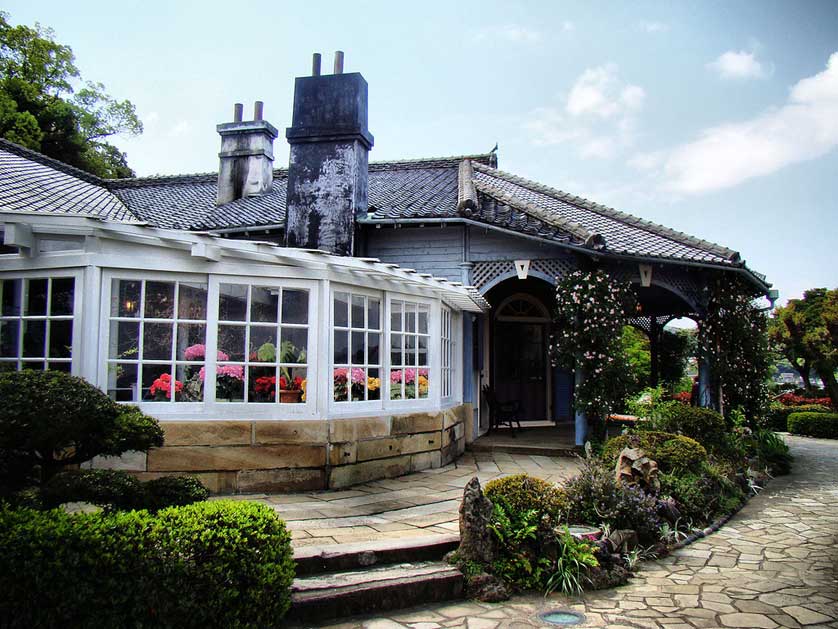
Glover's western style house at Glover Garden
Other notable buildings in Glover Garden
While the Glover Residence is the star attraction, Glover Garden houses several other notable buildings that offer valuable insights into Nagasaki's foreign settlement. These structures, relocated from various parts of the city, represent different aspects of Western influence on Japanese society.
One such building is the Ringer House, built in 1865 for Frederick Ringer, a British merchant involved in the tea trade. The house features unique architectural elements, including foundation stones brought from Vladivostok, highlighting the international connections of Nagasaki's foreign residents.
Another significant structure is the Alt House, constructed for William Alt, a prominent tea exporter. This wooden home showcases the opulent lifestyle enjoyed by successful foreign merchants during the Meiji period. As you tour these buildings, you'll gain a deeper appreciation for the diverse community that shaped Nagasaki's international character.
The Former Mitsubishi No. 2 Dock House, dating from 1896, offers a glimpse into Nagasaki's shipbuilding heritage. This building served as a rest area for crew members whose vessels were undergoing repairs, underscoring the city's importance as a maritime hub.
Don't miss the Former Walker House, once home to the president of the Nagasaki District Court. Built in 1883, this residence exemplifies the Western-style architecture that became popular among both foreign and Japanese elites during the Meiji era.
Thomas Glover: The Scottish merchant who shaped Nagasaki's history
No visit to Glover Garden is complete without delving into the fascinating life of Thomas Blake Glover, the Scottish merchant whose legacy is inextricably linked to Nagasaki's modernization. Born in 1838 in Fraserburgh, Scotland, Glover arrived in Japan in 1859 at the age of 21, just as the country was emerging from centuries of isolation.
Glover's impact on Japan's industrial development was profound and far-reaching. He played a crucial role in several key industries:
- Shipbuilding: Glover helped establish Japan's first modern shipyard in Nagasaki, laying the foundation for the country's future prowess in naval technology.
- Coal mining: He developed Japan's first coal mine at Takashima, introducing Western mining techniques to the country.
- Arms trade: Glover supplied weapons to the samurai clans opposing the Tokugawa shogunate, indirectly contributing to the Meiji Restoration.
- Brewing: He played a role in founding the Japan Brewery Company, which later became the famous Kirin Brewery.
Beyond his business ventures, Glover was instrumental in facilitating cultural exchange between Japan and the West. He assisted in sending Japanese students abroad and helped bring foreign experts to Japan, accelerating the country's modernization process.
For his contributions to Japan's development, Glover was awarded the Order of the Rising Sun in 1908, becoming the first foreigner to receive this prestigious honor. Today, his legacy lives on not only in Glover Garden but also in the numerous industries and institutions he helped establish.
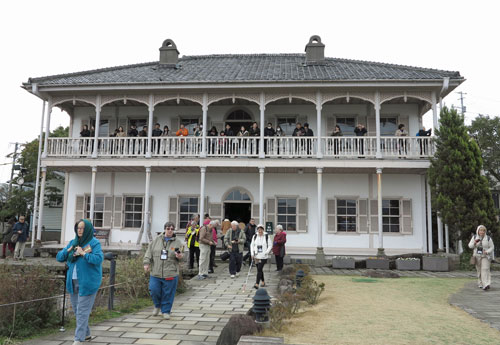
Former Mitsubishi Number 2 Dock House at Glover Garden
Cultural influences and connections to Madame Butterfly
Glover Garden's cultural significance extends beyond its historical and architectural merits, as it has become inextricably linked to one of the most famous operas in the world: Puccini's Madame Butterfly. While the connection between Glover and the opera is more romantic legend than historical fact, it adds an intriguing layer to the garden's allure.
The Glover Residence is often referred to as the "Madame Butterfly House" due to its striking resemblance to the setting described in the opera. The picturesque view of Nagasaki harbor from the house's veranda certainly evokes the romantic atmosphere of Puccini's masterpiece.
Adding to this connection, visitors to Glover Garden will encounter statues of both Puccini and Tamaki Miura, a renowned Japanese soprano famous for her portrayal of Cio-Cio San, the opera's protagonist. These statues serve as a tangible link between the historical site and its artistic legacy.
While there's no concrete evidence that Glover's life directly inspired Madame Butterfly, his marriage to a Japanese woman named Tsuru Awajiya has fueled speculation. Their cross-cultural union, set against the backdrop of Japan's rapid Westernization, mirrors themes explored in the opera.
Regardless of the historical accuracy, the association with Madame Butterfly has undoubtedly contributed to Glover Garden's romantic appeal. As you stroll through the grounds, you might find yourself imagining the bittersweet love story unfolding amidst the Western-style buildings and Japanese gardens.
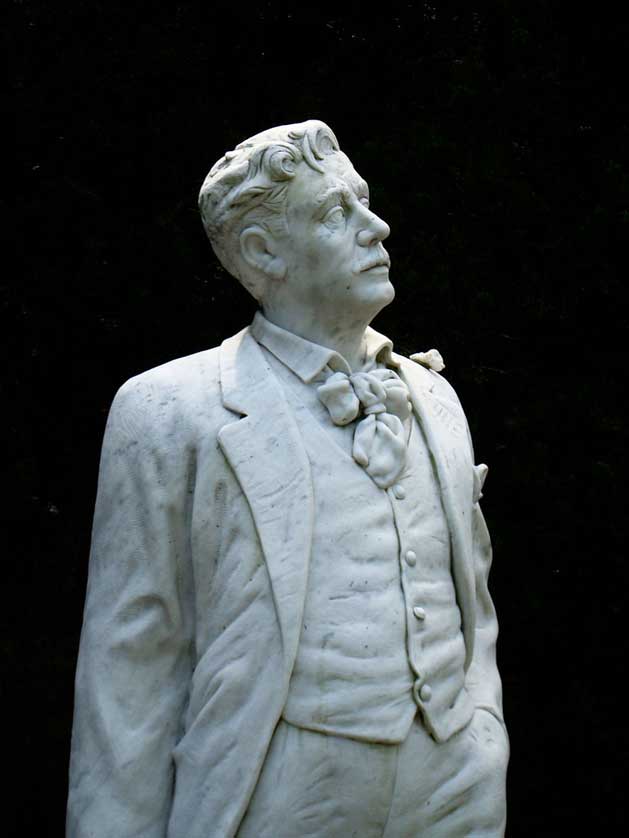
Statue of Puccini at Glover Garden Nagasaki; note the butterfly on his left shoulder
Visitor experience and practical information
Visiting Glover Garden offers a rich, multifaceted experience that caters to history enthusiasts, architecture lovers, and casual tourists alike. To make the most of your visit, consider the following practical information and tips:
Opening hours: Glover Garden is open daily from 8:00 AM to 6:00 PM, with last admission at 5:40 PM. During peak seasons, hours may be extended, so it's wise to check in advance.
Admission fees: As of 2023, general admission is ¥620 for adults, ¥310 for high school students, and ¥180 for elementary and junior high school students. Group discounts are available.
Guided tours: While not mandatory, guided tours can greatly enhance your understanding of the site's history and significance. Audio guides are available in multiple languages for a small fee.
Best times to visit: Spring (March to May) offers beautiful cherry blossoms, while autumn (October to November) provides stunning foliage. The garden is also beautifully illuminated during the winter illumination event from late November to late December.
To reach Glover Garden, take tram line number 5 to the Ouratenshudo stop. From there, it's a short 5-minute walk to the entrance. For more detailed Glover Garden Access information, consult the official website or local tourist information centers.
Don't forget to wear comfortable shoes, as the garden involves some uphill walking. Also, consider bringing a camera to capture the stunning views of Nagasaki harbor from various vantage points within the garden.
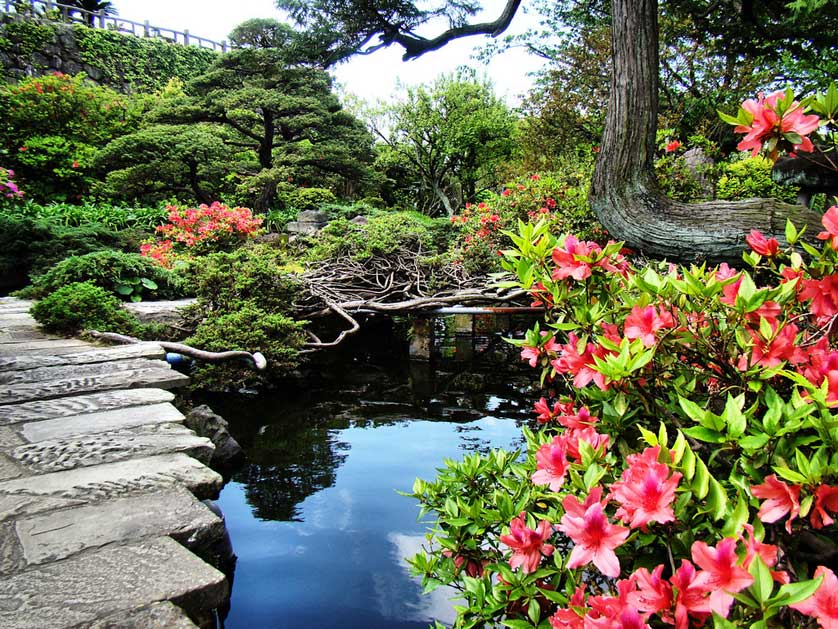
The pleasant gardens at Glover Garden, Nagasaki
Glover Garden's role in modern Nagasaki tourism
In contemporary Nagasaki, Glover Garden plays a vital role in the city's tourism industry and cultural landscape. As one of Nagasaki's most popular attractions, it draws nearly two million visitors annually, contributing significantly to the local economy and helping to preserve an important chapter of Japan's history.
The garden serves as a powerful symbol of Nagasaki's unique historical position as a bridge between Japan and the West. It offers both domestic and international tourists a tangible connection to the dramatic changes that shaped modern Japan. This aspect of Nagasaki's history complements the city's other significant sites, such as the Nagasaki Peace Park and Atomic Bomb Museum, providing a more comprehensive view of the city's complex past.
Beyond its historical significance, Glover Garden has become a cultural hub in Nagasaki. The site hosts various events throughout the year, including illumination festivals, concerts, and historical reenactments. These events not only attract visitors but also foster a sense of community and cultural pride among local residents.
The garden's connection to the opera Madame Butterfly has also contributed to its appeal, attracting music and literature enthusiasts from around the world. This cultural association has helped position Nagasaki as a destination for arts and culture, broadening its appeal beyond historical tourism.
As Nagasaki continues to evolve, Glover Garden remains a constant reminder of the city's international heritage and its role in shaping modern Japan. Its preservation and promotion demonstrate Nagasaki's commitment to honoring its past while embracing its future as a vibrant, multicultural city.
For those interested in delving deeper into Nagasaki's rich cultural heritage, consider exploring other historical sites such as the Gunkanjima (Battleship Island) or the Confucius Shrine. These attractions, along with Glover Garden, offer a comprehensive view of Nagasaki's diverse history and its continuing importance in modern Japan.
To further enrich your understanding of Japan's fascinating history and culture, you might want to explore some Books on Japan before or after your visit. These resources can provide valuable context and insights, enhancing your appreciation of Glover Garden and its significance in Japan's journey towards modernization.
For a visual preview of what awaits you at Glover Garden, check out this informative Glover Garden Video. It offers a glimpse of the beautiful grounds, historic buildings, and breathtaking views that make this site a must-visit destination in Nagasaki.

